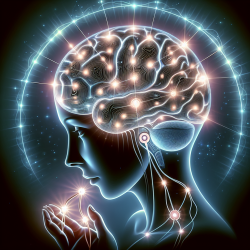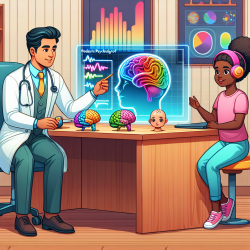Introduction
Post-stroke aphasia, a debilitating language disorder, affects a significant percentage of stroke survivors, impacting their communication abilities and quality of life. Traditional speech-language therapy offers modest benefits, but recent research highlights the potential of non-invasive brain stimulation techniques, such as high-definition transcranial direct current stimulation (HD-tDCS), to enhance recovery outcomes. A recent study, "High definition transcranial direct current stimulation modulates abnormal neurophysiological activity in post-stroke aphasia," explores the efficacy of HD-tDCS in modulating neurophysiological activity and improving language performance in aphasia patients.
Understanding HD-tDCS
HD-tDCS is a neuromodulatory technique that alters neuronal resting membrane potentials, thereby modifying cortical excitability. This method offers a promising avenue for neurorehabilitation due to its safety, portability, and cost-effectiveness. The study in question utilized individually-targeted HD-tDCS to address pathological oscillatory activity in the brains of aphasia patients, aiming to reduce abnormalities and improve language function.
Key Findings
The study involved eleven chronic aphasia survivors, where researchers localized perilesional areas exhibiting peak abnormalities using magnetoencephalography (MEG). These areas were then targeted with excitatory/anodal-tDCS or inhibitory/cathodal-tDCS. The results demonstrated:
- Increased repetition accuracy post-anodal-tDCS.
- Decreased contralateral theta and coarse-scale multiscale entropy (MSE), indicating reduced slow activity.
- Increased perilesional low-gamma and fine-scale MSE, suggesting enhanced fast activity.
These findings suggest that HD-tDCS can effectively reverse pathological abnormalities in aphasia patients, leading to improved language outcomes.
Implications for Practitioners
For practitioners in the field of speech-language pathology, these results underscore the importance of personalized treatment approaches in aphasia recovery. By utilizing advanced techniques like HD-tDCS, clinicians can target specific neurophysiological abnormalities, potentially enhancing the efficacy of traditional therapies. Moreover, the study highlights the utility of MEG as a sensitive measure for guiding therapeutic interventions.
Encouraging Further Research
While the study provides promising insights, it also opens avenues for further research. Investigating the long-term effects of HD-tDCS, optimizing electrode placement, and exploring its application in different phases of stroke recovery could significantly advance our understanding and treatment of aphasia. Practitioners are encouraged to stay informed about ongoing research and consider participating in studies to contribute to this evolving field.
Conclusion
The integration of HD-tDCS in aphasia treatment represents a significant advancement in neurorehabilitation. By focusing on data-driven approaches and leveraging cutting-edge technology, practitioners can enhance therapeutic outcomes and improve the quality of life for stroke survivors. For those interested in delving deeper into the research, the original study provides comprehensive insights into the methodology and findings.
To read the original research paper, please follow this link: High definition transcranial direct current stimulation modulates abnormal neurophysiological activity in post-stroke aphasia.










